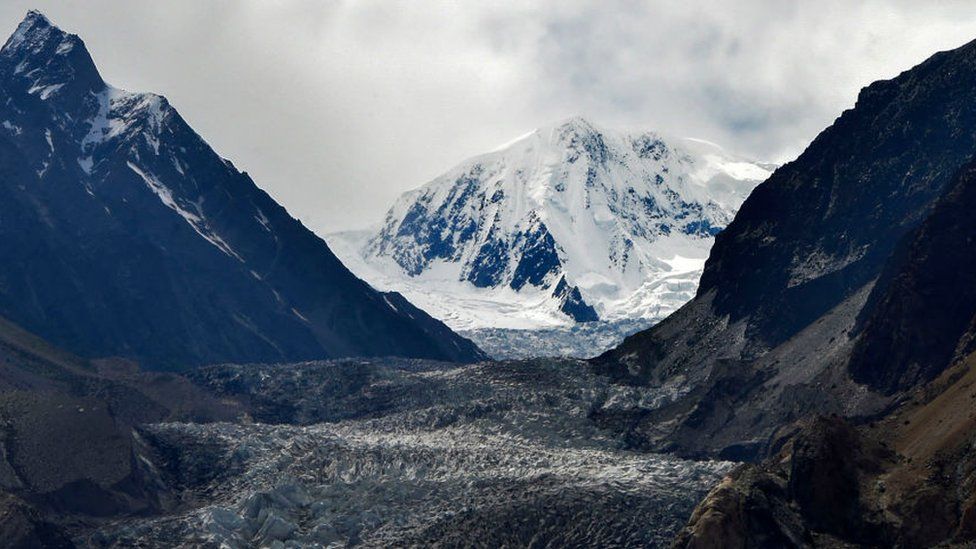How Pakistan floods are linked to climate change
The staggering floods in Pakistan are a "reminder" to the world on the dangers of environmental change, specialists have said.
The record-breaking precipitation would destroy any country, not simply less fortunate countries, one environment researcher has told BBC News.
The human effects are clear - one more 2,000 individuals were protected from floodwaters on Friday, while pastors caution of food deficiencies after close to a portion of the nation's harvests were washed away.
A feeling of treachery is definitely felt in the country. Pakistan offers under 1% of the worldwide ozone harming substances that warm our planet however its geology makes it very helpless against environmental change.
"In a real sense, 33% of Pakistan is submerged at the present time, which has surpassed each limit, each standard we've found before," Climate serve Sherry Rehman said for this present week.
Pakistan is situated at a put on the globe which endures the worst part of two significant climate frameworks. One can cause high temperatures and dry spell, similar to the heatwave in March, and the other brings storm downpours.
Most of Pakistan's populace live along the Indus waterway, which grows and can flood during storm downpours.
The science connecting environmental change and more extraordinary storms is very straightforward. An unnatural weather change is making air and ocean temperatures increase, prompting more vanishing. Hotter air can hold more dampness, making storm precipitation more serious.
Researchers anticipate that the typical precipitation in the Indian summer storm season will build because of environmental change, makes sense of Anja Katzenberger at the Potsdam Institute for Climate Impact Research.
However, Pakistan has something different making it defenseless to environmental change impacts - its gigantic icy masses.
The northern district is in some cases alluded to as the 'third pole' - it contains more icy ice than anyplace on the planet beyond the polar areas.
Frigid ice in Pakistan
Picture SOURCE,GETTY IMAGES
As the world warms, frigid ice is liquefying. Icy masses in Pakistan's Gilgit-Baltistan and Khyber Pakhtunkhwa districts are dissolving quickly, making in excess of 3,000 lakes, the UN Development Program told BBC News. Around 33 of these are in danger of unexpected exploding, which could release a huge number of cubic meters of water and garbage, jeopardizing 7 million individuals.
Map and photographs show degree of Pakistan floods
World's ice sheets softening at quicker rate
Environmental change grows chances of Pakistan heatwave
Pakistan's administration and the UN are endeavoring to decrease the dangers of these abrupt explosion floods by introducing early-advance notice frameworks and defensive foundation.
In the past more unfortunate nations with more vulnerable flood safeguards or lower-quality lodging have been less ready to adapt to outrageous precipitation.
A scaffold harmed by a chilly lake explosion
Picture SOURCE,GETTY IMAGES
Picture subtitle,
Frosty lake explosions are now harming framework
In any case, environment influence researcher Fahad Saeed let BBC News know that even a rich country would be overpowered by the horrendous flooding this mid year.
"This is an alternate kind of creature - the size of the floods is so high and the downpour is outrageous to the point that even exceptionally vigorous protections would battle," Dr Saeed makes sense of from Islamabad, Pakistan.
He focuses to the flooding in Germany and Belgium that killed many individuals in 2021.
Pakistan got almost 190% more downpour than its 30-year normal from June to August - arriving at a sum of 390.7mm.
He says that Pakistan's meteorological assistance made a "sensible" work in advance notice individuals ahead of time about flooding. Furthermore, the nation has some flood protections yet they could be improved, he says.
Individuals with the littlest carbon impressions are experiencing the most, Dr Saeed says.
"The casualties are residing in mud homes with scarcely any assets - they have contributed essentially nothing to environmental change," he says.
The flooding has impacted regions that don't typically see this sort of downpour, including southern locales Singh and Balochistan that are regularly dry or semi-bone-dry.
Singh region anticipates more destruction
Yusuf Baluch, a 17-year-old environment dissident from Balochistan, says that imbalance in the nation is exacerbating the issue. He recollects his own family home being washed away by flooding when he was six years of age.
"Individuals living in urban communities and from additional favored foundations are least impacted by the flooding," he makes sense of.
"Individuals reserve the option to be furious. Organizations are as yet extricating petroleum derivatives from Balochistan, however individuals there have quite recently lost their homes and have no food or sanctuary," he says. He accepts the public authority is neglecting to help networks there.
Dr Saeed says the floods are "totally a reminder" to states internationally who vowed to handle environmental change at progressive UN environment meetings.
"This is all event when the world has warmed by 1.2C - any more warming than that is a capital punishment for some individuals in Pakistan," he adds.

.png)
Comments
Post a Comment